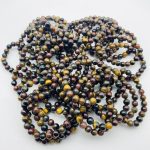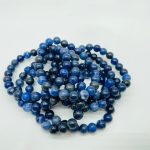Introduction
In the realm of gemstones, few colors are as captivating and alluring as pink and orange. The captivating hue of kunzite, a rare and enchanting gemstone, embodies the perfect blend of these two vibrant hues. With its mesmerizing transparency and versatility, kunzite has captured the hearts of gemstone enthusiasts and jewelry aficionados alike. This comprehensive guide will delve into the captivating world of kunzite, exploring its unique properties, captivating history, and diverse applications.

Pain Points:
- Lack of knowledge about kunzite’s properties and potential applications
- Limited availability of high-quality kunzite gemstones
- Confusion regarding the different shades and varieties of kunzite
Motivations:
- Desire for a unique and captivating gemstone
- Appreciation for the beauty and versatility of kunzite
- Interest in exploring the history and applications of this rare gemstone
Unveiling the Mystique of Kunzite
Discovered in 1902 by renowned gemologist George Frederick Kunz, kunzite derives its name from its illustrious discoverer. This remarkable gemstone belongs to the spodumene mineral group and primarily exhibits a delicate pink hue. However, kunzite’s enchanting beauty extends beyond its primary color; it can also display subtle shades of orange, lilac, and yellow.
Physical Properties:
- Hardness: 6.5 – 7 on the Mohs scale
- Density: 3.18 g/cm³
- Refractive Index: 1.66 – 1.68
- Crystal System: Monoclinic
Composition:
- Lithium Aluminum Silicate (LiAlSi₂O₆)
Unearthing the Origins of Kunzite
The genesis of kunzite is as captivating as its appearance. This rare gemstone forms within pegmatites, igneous rocks characterized by their coarse-grained texture. Kunzite deposits have been discovered in various locations worldwide, including Afghanistan, Brazil, Madagascar, and the United States.
Key Deposits:
- Afghanistan: The Nuristan province is renowned for its exceptional kunzite specimens.
- Brazil: Minas Gerais boasts abundant kunzite deposits, contributing significantly to the global supply.
- Madagascar: The Antsirabe region is known for producing vibrant and high-quality kunzite gemstones.
- United States: The Pala pegmatite in California has yielded some of the finest kunzite specimens ever discovered.
The Allure of Kunzite’s Color Palette
The captivating beauty of kunzite lies in its mesmerizing color palette. While pink is its predominant hue, impurities and trace elements introduce intriguing variations.
Color Variations:
- Pink: The most common color, ranging from pale pastel shades to vibrant fuchsia tones.
- Orange: Subtle hints of orange add warmth and depth to the gemstone’s overall appearance.
- Lilac: Delicate lilac hues create a dreamy and ethereal quality in certain kunzite specimens.
- Yellow: Rare and highly sought-after, yellow kunzite exhibits a sunny and cheerful disposition.
Exceptional Qualities of Kunzite
Beyond its captivating color, kunzite possesses exceptional qualities that elevate it among the most coveted gemstones.
Transparency:
Kunzite exhibits exceptional transparency, allowing light to penetrate its depths and reveal its inner beauty.
Hardness:
With a hardness of 6.5 – 7 on the Mohs scale, kunzite offers durability and resistance to scratching, making it suitable for everyday wear.
Versatile Cutting:
Kunzite’s adaptability allows for a wide range of cutting styles, including round brilliants, ovals, and square-shaped cuts.
The Healing Properties of Kunzite
Throughout history, gemstones have been



























